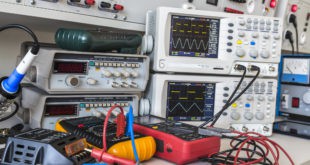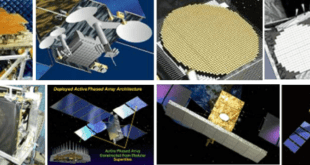The rapid evolution of wireless consumer electronics, from smartphones and smartwatches to IoT devices and wearables, has ushered in an era where seamless connectivity and high performance are non-negotiable. Ensuring optimal wireless functionality requires an intricate interplay of cutting-edge technologies, robust testing methodologies, and innovative measurement systems. Over-the-Air (OTA) testing …
Read More »Precision Motion Control Systems: A Key Enabler of Modern Technology
In the world of advanced engineering, precision is paramount. Whether in robotics, aerospace, medical devices, or industrial automation, the ability to control motion with high accuracy is a critical factor in achieving desired outcomes. This is where precision motion control systems come into play. These systems are the backbone of …
Read More »Evolution of Consumer Electronics Product Design and Development
The world of consumer electronics design and development has undergone a monumental transformation, evolving from rudimentary approaches to highly integrated and user-centric processes. From the early days of analog devices like radios and televisions to today’s interconnected digital ecosystems, the journey of consumer electronics has been defined by technological innovation, …
Read More »Advanced Millimeter-Wave Testing and Measurements for 5G, Ka-Band Satellites, Military, and Automotive Radar Systems
As technology advances and demand for faster, more reliable communication systems grows, millimeter-wave (mmWave) frequencies are becoming increasingly essential in various industries. Millimeter-wave (mmWave) technologies are revolutionizing several sectors, including 5G cellular communications, Ka-band satellite communications, and military and automotive radar systems. These high-frequency bands, typically ranging from 30 GHz …
Read More »Exploring the Fascinating World of Microwave Components and Devices: An Overview
Microwave technology is at the heart of modern communication systems, radar technology, satellite communication, and even advanced medical devices. Operating in the frequency range of 300 MHz to 300 GHz, microwave components and devices have unique characteristics that make them essential in high-frequency applications. From enabling wireless communication to powering …
Read More »Antenna Technologies Shaping the Future of Space-Based Communications
Space-based communications have revolutionized how we connect, navigate, and explore. The realm of space-based communications is undergoing a significant transformation, driven by advancements in antenna technologies. From enabling high-speed data transfer across vast distances to powering next-generation satellite constellations, antennas play a pivotal role in ensuring the seamless exchange of information …
Read More »Enhancing UAV Operations with Embedded Tracking Antenna and Control Systems
In recent years, there has been growing interest in using airborne platforms, especially unmanned aerial vehicles (UAVs), for various real-time applications such as military reconnaissance, disaster monitoring, border patrol, and airborne communication networks. UAVs carry out a variety of military and civilian missions including surveillance, target recognition, battle damage assessment, …
Read More »The Growing Demand for RF Test Equipment: Key Trends and Market Insights
RF test equipment plays a critical role in the design, manufacturing, and maintenance of devices that operate within the RF spectrum, such as telecommunications gear, consumer electronics, automotive systems, and aerospace applications. These devices—ranging from oscilloscopes to signal generators—are essential for ensuring that products meet specific performance standards and regulatory …
Read More »Ensuring Accuracy and Reliability: The Importance of Military RF and Microwave Measuring Equipment and Testing”
The electromagnetic spectrum spans a wide range of frequencies, from radio waves and microwaves to visible light, X-rays, and gamma rays. As the wavelength of electromagnetic radiation decreases, its frequency—and consequently its energy—increases. Radio Frequency (RF) and Microwave (MW) technologies, both subsets of this spectrum, are crucial for numerous military …
Read More »The Future of Immersive Technologies: A Comprehensive Overview of the Global VR/AR Market
Introduction The augmented reality (AR) and virtual reality (VR) market is witnessing unprecedented growth, fueled by rapid technological advancements and expanding applications across multiple industries. These immersive technologies are transforming the way we interact with digital content, driving innovations in gaming, education, healthcare, manufacturing, automotive design, and military operations. The …
Read More » International Defense Security & Technology Your trusted Source for News, Research and Analysis
International Defense Security & Technology Your trusted Source for News, Research and Analysis

